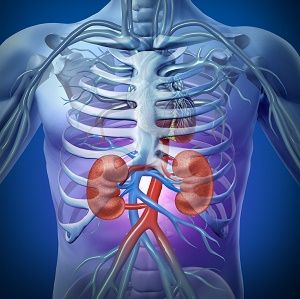Article
Traditional Risk Factors for Incident CKD Yielded Greater Racial Disparities
Author(s):
Results from the REGARDS study suggest traditional CKD risk factors were associated with higher risk of incident CKD and eGFR decline in Black individuals, compared to White individuals.

Traditional risk factors for chronic kidney disease (CKD) resulted in a higher risk of incident CKD and estimated glomerular filtration rate (eGFR) decline in Black individuals compared to White individuals, according to new research.
Factors including older age, lower education and income, higher systolic blood pressure, albuminuria, body mass index (BMI), diabetes, cardiovascular disease (CVD), current smoking and residence in the US stroke belt were independently associated with CKD.
“Black race was not associated with risk of eGFR change or incident CKD in the model that included other risk factors, suggesting that prevention or better treatment of conventional CKD risk factors is important for narrowing the racial disparity in CKD,” wrote corresponding author Katharine L. Cheung, MD, PhD, Larner College of Medicine, Division of Nephrology, The University of Vermont.
Previous research has indicated substantial disparities between Black and White populations in the prevalence of CKD and their associated costs, with Black individuals experiencing greater morbidity, mortality, and kidney failure. Although risk factors for incident CKD and/or longitudinal eGFR decline in population-based cohorts in the US have been examined, few studies have included substantial representation of Black individuals and geographic diversity.
The REGARDS study is a prospective cohort study of 30,239 Black and White adults age 45 years and older in the United States enrolled between 2003 and 2007. As the focus was on assessing disparities in Black-White and regional disparities in stroke and cognitive decline, only self-identified non-Hispanic, White, and Black individuals were included and residents in the southeastern US stroke belt were oversampled.
Kidney function was measured at two time points: at the baseline and second in-person visits. Change in eGFR was defined as the difference in eGFR divided by time in years for each participant. Incident CKD was further defined as an eGFR <60 ml/min/1.73m2 at follow-up and at least a 40% decline in eGFR from baseline or initiated kidney replacement therapy through 2018.
A total of 14,499 participants in REGARDS attended the baseline and follow-up visits. After exclusions, there were 11,997 participants in the final analytic cohort. Participants were 63±8 years old, 54% female, and 35% Black.
Over a mean 9.4 ±1.0 years follow-up, a total of 1,067 participants developed incident CKD, 62 of whom had kidney failure. Those who developed incident CKD were older, more likely female, Black, residing in the stroke belt, and had lower income and education level at baseline.
The probability of incident CKD was 9% for the overall cohort and showed minimal differences by sex and race groups. Probability of incident CKD was higher across age strata, ranging from 4% for the 45 - 54 age group to 18% for the ≥75 age group.
The findings suggest age and Black race were associated with eGFR change in the demographics adjusted model (β -0.13, P < .0001). In the fully adjusted model accounting for all risk factors, Black race was no longer associated with eGFR change (β 0.02, P = .54).
Moreover, age, low income, residence in the stroke belt, systolic blood pressure, BMI, diabetes, hyperlipidemia, and albuminuria were independently associated with eGFR decline. Investigators noted similar results were found for the models where incident CKD was the outcome.
Albuminuria was a stronger risk factor for eGFR change in Black compared to White participants (β -0.26 vs β -0.17, P for interaction, 0.01), as was incident CKD (RR, 1.38 [95% CI, 1.30 - 1.45] vs. 1.24 [95% CI, 1.16 - 1.32]; P for interaction, 0.02). Specifically, albuminuria was a stronger risk factor for eGFR change and incident CKD in the stroke belt compared to non-stroke belt.
“It is noteworthy that the increased risk of CKD among residents of the US stroke belt was independent of established CKD risk factors that disproportionately impact the southeastern US, including smoking, diabetes, low socioeconomic status and cardiovascular disease,” Cheung added. “These findings suggest that other factors may contribute to the development of incident CKD in those residing in the US stroke belt.”
The study, “Risk Factors for Incident CKD in Black and White Americans: The REGARDS Study,” was published in the American Journal of Kidney Diseases.





